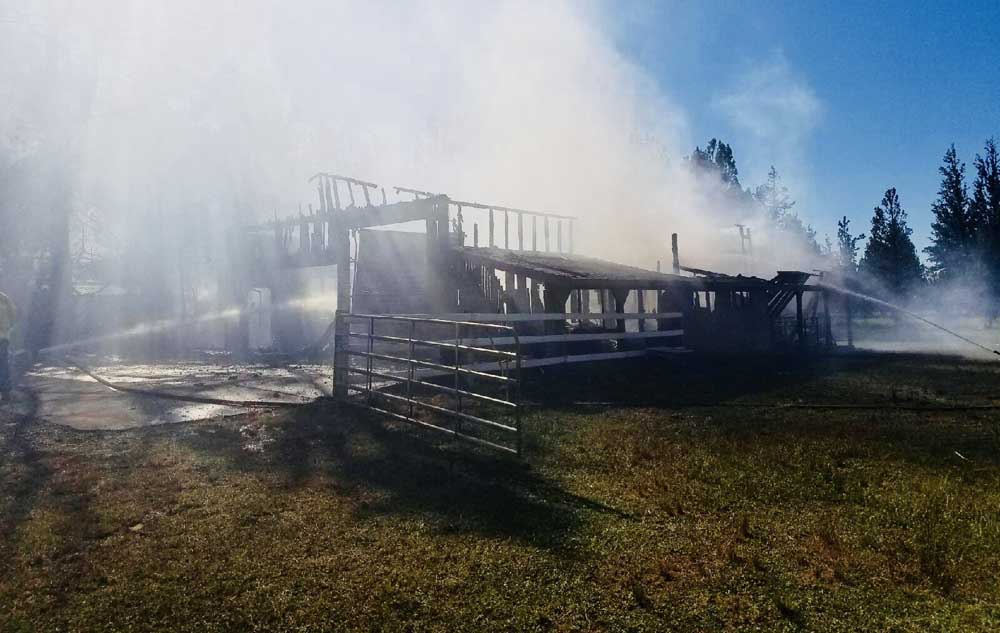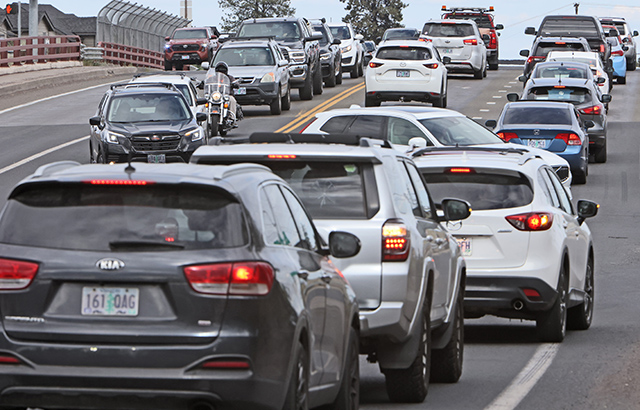Conditions ripe for big fire in Central Oregon
Published 12:00 am Saturday, July 28, 2018

- A barn off Old Bend Redmond Highway was destroyed in a fire on Thursday, July 26, 2018. (Deschutes County Sheriff's Office/Submitted photo)
The air in Central Oregon is dry. The fuels are dry. There hasn’t been major rain in weeks. The temperatures are high, and the area is flush with tens of thousands of tourists perhaps unfamiliar with the region’s susceptibility to fire.
Although the region has avoided it so far this summer, conditions are perfect for a major fire to claim life and property.
Trending
Dave Howe, battalion chief with the Bend Fire Department, said now is a critical time of year for fire agencies.
“The thin fuels like grasses are really dry, and there’s a perfect air-fuel mixture,” he said Friday. “And it takes very little — sparks from a grinding metal or a lawn mower hitting a rock — and off she goes. And it’ll burn faster than you can stomp. It burns too fast.”
There have been several smaller fires in and around the city so far this summer, including a barn that burned to the ground Thursday on the Old Bend Redmond Highway. The Bessie Butte Fire, which started Sunday, burned about 50 acres eight miles south of Bend.
Oregon has seen numerous fires this season including the Substation Fire southeast of The Dalles, the lightning-caused Boxcar Fire near Maupin, the Jackknife Fire west of The Dalles and the Graham Fire north of Madras.
A Wasco County resident died attempting to protect his neighbor’s property from the Substation Fire, and the Graham Fire crept into a subdivision and claimed several homes.
Many of the fires in 2018 were due to the improper disposal of cigarettes and other ignition sources, Howe said.
Trending
“Someone will unconsciously flick a cigarette into bark mulch, and, in the spring, it’s not going to ignite. But in the summertime, it’s going to ignite. And it’s not going to burn with big flames. It’s going to creep along in the bark mulch or the duff until it finds something that it can actually burn, like the siding of a house.”
And while many locals understand the danger of tossing a cigarette butt, the region is flush with visitors — 20,000 to 22,000 every busy summer day.
“That’s a lot of people who don’t necessarily know,” Howe said.
Statistically, the first week of August is when agencies are most active combating fire.
“We’re seeing conditions like the first week of August, now,” Howe said. “So we’re one or two weeks ahead of what is normally the highest level of fire danger, and we haven’t gotten to August yet.”
Fire danger in Oregon’s higher elevation forests is high, but conditions aren’t at a level the agency considers “critical,” said Patrick Lair, spokesman for Central Oregon Interagency Dispatch and the Ochoco National Forest.
But one problem this time of year is being spread thin, Lair said.
“We do have a lot of resources already in place because we’ve got a lot of fires going, so it’s a challenge to move resources around quickly to respond,” he said.
The forecast is expected to stay dry throughout early August, according to Diann Coonfield, meteorologist with the National Weather Service.
“There’s nothing bringing any moisture in the next week to 10 days,” she said.
Above-normal temps and near-normal precipitation are predicted for the remainder of August. Coonfield reminded that, “normal is dry in August in Bend.”
Precipitation doesn’t affect the region in uniform fashion. It might hit one street and miss the next. Fire officials don’t consider fire season over until a large, wetting rain affects an agency’s entire response area, which typically doesn’t occur until September or October. Firefighters know well that even if rain does come in August, it could be a very bad thing. The main ignition source of fires in the area is lightning.
“We’ve had summers where we were dry as a tinder box, but the lightning never came,” Lair said.
— Reporter: 541-383-0325, gandrews@bendbulletin.com








